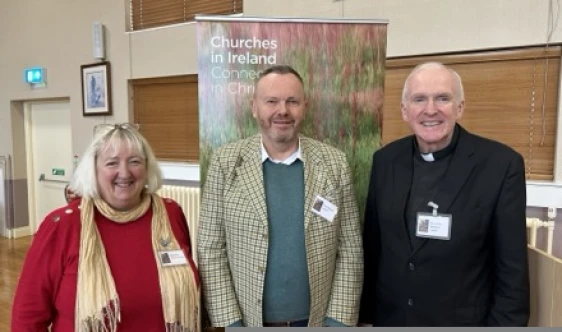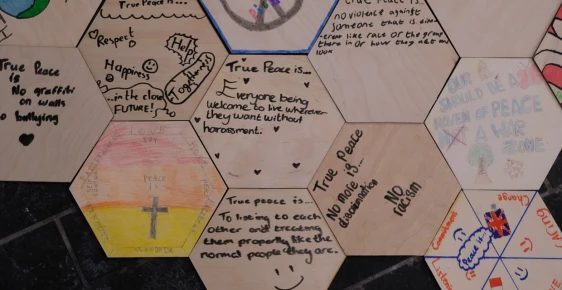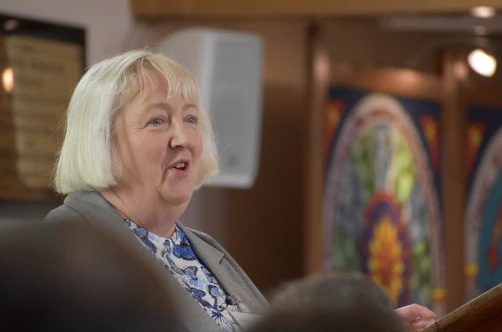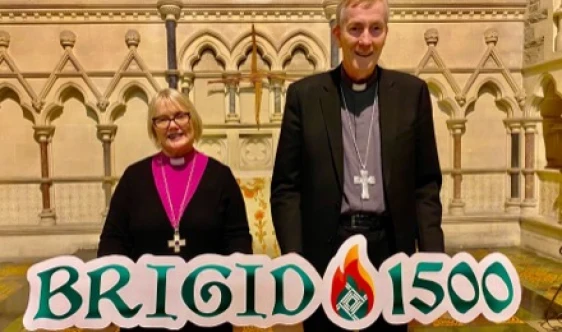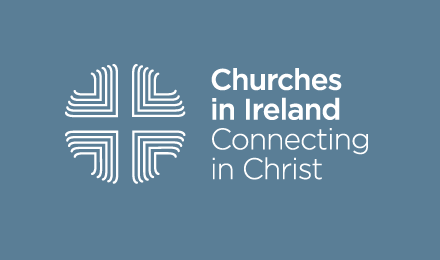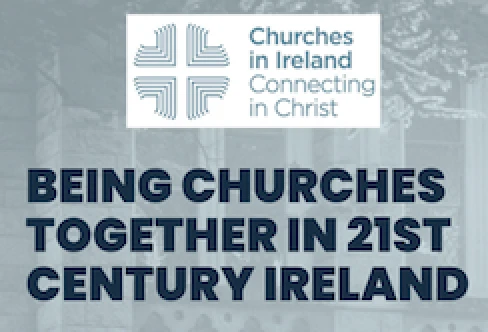
© Rev Brian Anderson
I count it a privilege to have been a participant at the European workshop titled, “On dealing with a Past burdened by violence”.
It took place in the Centre for Dialogue and Prayer in Oswiecim, the city where Auschwitz is located. The peace and reconciliation workshop, hosted by the Maximilian Kolbe Foundation has taken place annually for the last ten years in memory of Kolbe’s ultimate sacrifice.
Maximilian Kolbe was a Polish Franciscan Friar, who was taken to the Death Camp at Auschwitz in May 1941. Kolbe sacrificed his life for the life of a man who had been selected to die after a failed escape attempt. Life was terrible in the camp, as the Nazi’s starved the inmates to death.
One rule in Auschwitz was if anyone tried to escape — 10 inmates were selected to confinement in the camps prison until they died of starvation. After one failed escape attempt, Franciszek Gajowniczek was selected to die, but he squealed, “my poor wife, my poor children, what will they do?” Kolbe stepped forward from the line and requested the guards select him, saying, “I am a Catholic Priest, I am old, let me take his place, he has a wife and children.” Surprisingly the soldiers did the trade, and so Kolbe gave his life to save another, and Gajowniczek survived the camp and died in 1995.
The other participants were from various European countries, many of who had a violent past. Representatives from Germany, Poland, Bosnia & Herzegovina, Bulgaria, Albania and not least Ireland gathered together. They were historians, academics, pastors, people of faith and none.
“To see those who cast a violent shadow over the present as humans, even if misguided, is a start.”
The first day we spent in the camps of Auschwitz and Birkenau. The Germans decided on the Final Solution of the Jewish question; a euphemism for the mass murder of Europe’s Jews. These two previous concentration camps where now to become places of mass murder. The Nazi’s murdered 6 million Jews in this solution, and 1.3 Million where murdered in Auschwitz–Birkenau.
To think of the lie that was being portrayed as we walked through the iron gates with the words “Arbeit macht frei” and stopped where the camp orchestra would have played welcoming music for the new inmates was sickening. I found it chilling walking around the camps, impossible to imagine the numbers. So, I tried to focus on individuals. I looked at the locks of hair shaven that had belonged to innocent people, or the small red shoes of a child. These helped me see the numbers as individuals. In both camps we stopped at the gas chambers and heard the story of how death was carried out.
At the end of this day we met in groups of 10 and were asked to share our feelings, not do any analysis. We were all very humbled, tearful, upset at what people went through, struck by individual stories of courage. A doctor from Albania noticed as we moved through the hut that told the story of the children in Auschwitz, how a butterfly landed on a photograph of gaunt Jewish child. She saw it as a sign of hope.
The German soldiers were ordered not to have any feelings towards the Jews who they saw as a scar on the face of the earth to eradicated. As we talked through the dehumanisation of the Jews, so we were challenged to think about those whose violence past casts a shadow over our countries today.
Maja from Bosnia and Herzegowina, movingly told her story of how she had lost 40 members of her family in their countries conflict. It was only when she saw the enemy as fellow humans, fighting for a cause she didn’t fully understand, that she was able to begin forgiving. Remarkably, she works at bringing young people from different national backgrounds together. To see those who cast a violent shadow over the present as humans, even if misguided, is a start.
Further reflections from this experience will be shared in future blogs.
